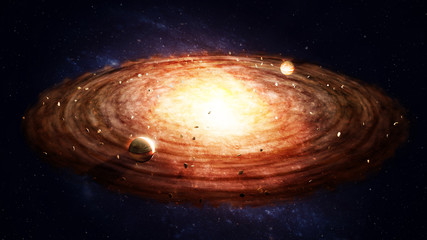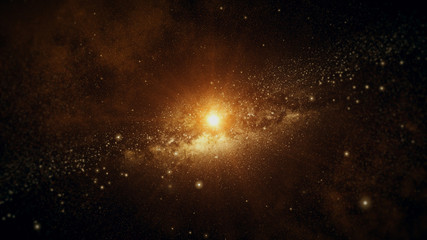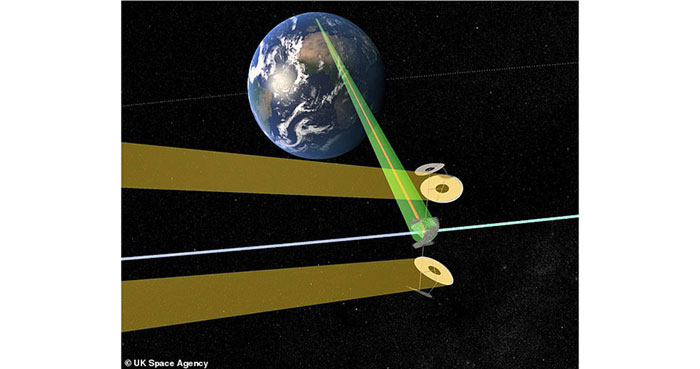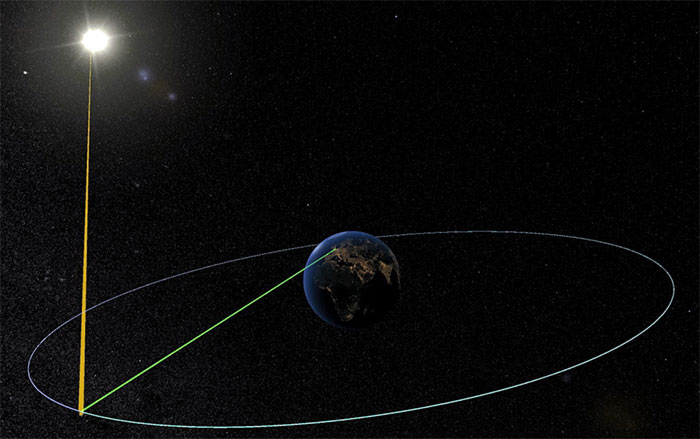Through science and technology, scientists are trying to determine how long ago the solar system formed. In many cases, researchers and scientists mention the cosmic timescale. It is human nature to view a decade as a significantly long time. Ten years or one hundred years, on a cosmic timescale, is s significantly small time.
Notably, cosmic timescales are measured in billions or millions of years. Recently, the Lawrence Livermore National Laboratory scientists said that it is likely the solar system formed in 200,000 years or less. On a cosmic scale, that is quite fast. Analysts and researchers made that decision after analyzing the isotopes of the element molybdenum present in meteorites.

That material makes up the sun and the solar system in general. It came from the collapse of a big gas and dust cloud that happened almost 4.5 billion years ago. By reviewing several other solar systems that formed like the one that we are on, astronomers managed to estimate the timescale.
They said that it might have taken between 1 and 2 million years for the collapse of this cloud and the eventual ignition of a star.
The Study Of The Solar System
Before the study, scientists believed that the solar system formation timeframe was not entirely known. This new research indicates that the gaseous cloud collapse that resulted in the formation of the solar system happened rapidly in below 200,000 years.
To put it into perspective, scientists on the project believe that if it is taken in comparison with human pregnancy, that pregnancy would last just 12 hours instead of nine months. Calcium-aluminum-rich inclusions (CAIs) are the oldest dated solids in the solar system.
The samples offer a direct record of the formation of the solar system that we live in. CAIs are micrometer two centimeter-sized inclusions together with meteorites that developed in high temperatures of more than 1300 degrees Kelvin which nears the young sun.

These CAIs were then moved outward to space where carbonaceous chondrite meteorites developed. Most of the CAIs formed 4.567 billion years ago within a period of 40,000 to 200,000 years. By determining the amount of trace element and molybdenum isotopic compositions of different Calcium-aluminum-rich inclusions from carbonaceous chondrite meteorites.
The research team discovered the unique isotopic compositions of these CAIs cover the whole range of surface material within the protoplanetary disc as opposed to a small slice. Thus, it can be said that the inclusions must have formed at the same time when the cloud collapsed.
UK Government Aims To Harvest Solar Power In Space
Gravity is not a limitation to human activity. For many years now, scientists and astronauts have been looking beyond the skies to study the solar system. Some of them are taking it further. The UK government said that it has commissioned and launched research into space-based solar power (SBSP) systems.

The UK sees the possibility of an unlimited clean source of power using considerably large solar power satellites and systems. If successful, the system can beam energy to ground-based receivers integrated into the national grid. This idea to create the SBSP system arises from science-fiction writer Isaac Asimov. He wrote in one of his books about this concept in 1941.
This idea was quite futuristic and it is about time that technology and economics need to catch up with it. Lightweight solar panels, low-cost commercial space launches, and advances in wireless power transmission are some of the components that will make this idea a reality.
The sun never sets in space which might prove advantageous to the UK economy if they manage to launch the SBSP program. Sources say that the commissioned study aims to discover if SBSP is sustainable, viable, and safe. The Frazer-Nash Consultancy will assess the project from an economics and engineering standpoint.

The biggest challenge that is already foreseen for this project is to assemble the massive satellites in space. It will be beyond the scale of anything ever seen before. SBSP is projected to launch its operations by 2050. But for now, the consultancy must ensure that the project offers more benefits than most of the other viable types of renewable energy.
Safety is also of major concern since the project might involve a high-frequency high-energy radio wave beam sent from space to earth. Also, many wonder whether hackers could redirect these beams and wreak havoc upon their targets at speeds of light.
Last year, the UK recorded a critical milestone in the generation of electricity. It produced more electricity from different low carbon sources including solar, wind, and nuclear power than it generated from fossil fuels.
0 komentar
Posting Komentar